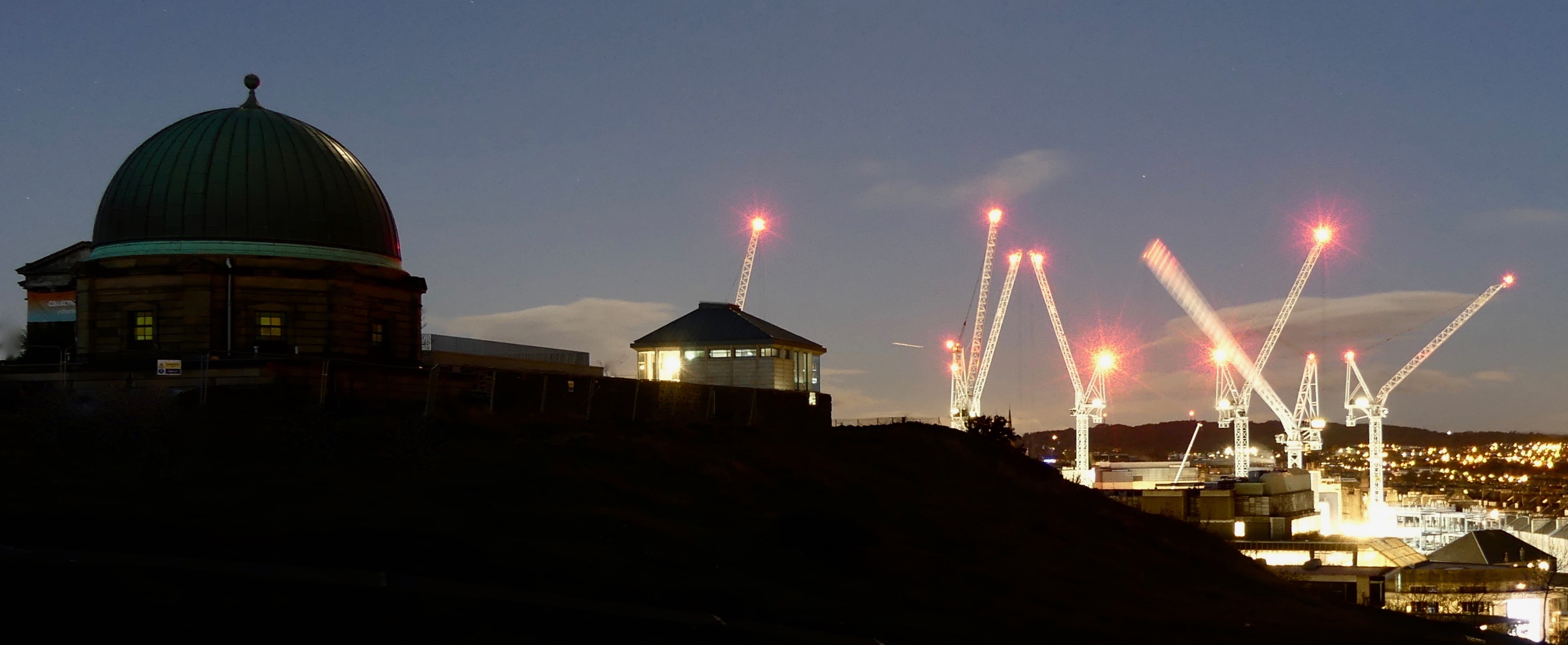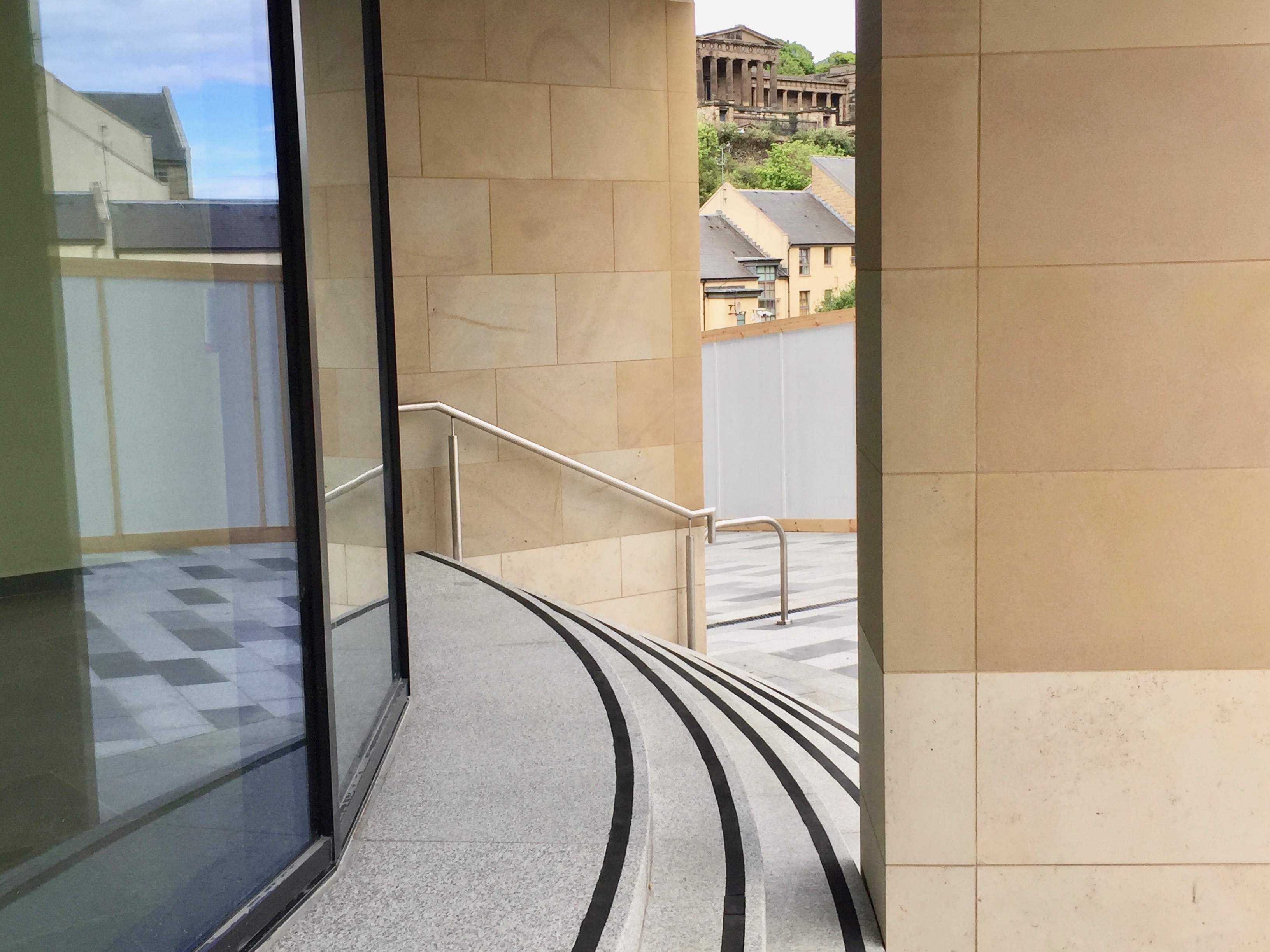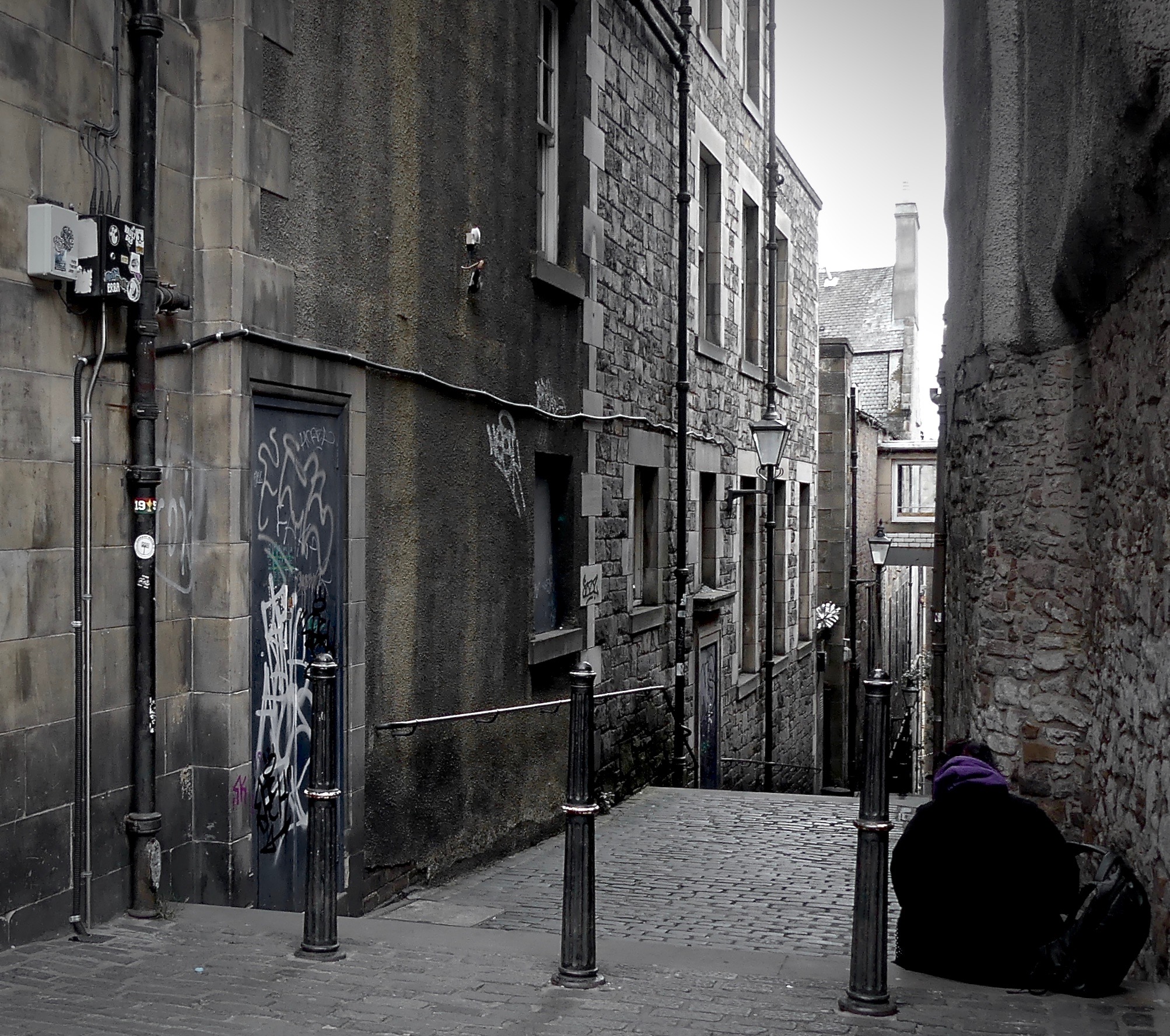
The Cockburn Association held a consultation in McDonald Road Library on 26 June, the first of five aimed at establishing recommendations for a new Local Development Plan (LDP).
The LDP will form the basis of local planning decisions for years to come, which is why community input to Cockburn consultations between now and its collation of a statement in the autumn is important. (Elsewhere, communtiy councils and other bodies/individuals are also framing statements.)
Wednesday’s event, The Residential City, focused on ‘qualitative concerns about the type of housing and neighbourhoods, and the necessary facilities that make a good place to live’.
It was hosted by Cockburn Chair Cliff Hague (CH, below-left), and Director Terry Levinthal (TL, right), and was attended by around 30 members of the public. A further 24 who had booked to attend were presumably distracted by the first sunshine of summer.
The background paper that informed the discussion is available HERE (page 9). It makes thought-provoking reading.
Below, we extract a few eye-catching points raised by CH and TL, before summarising the concerns expressed by members of the public in response.

Cockburn points to ponder
- Edinburgh’s economy is driven by four (unprecedentedly successful and influential) universities, a financial centre that emerged largely unscathed from the Crash in 2008, and rapidly growing tourism.
- City of Edinburgh Council’s tourism strategy envisages an increase in visitor numbers from 3.27M in 2012 to 4.8M in 2020.
- House prices in Edinburgh are now 6.12 times average earnings. Some 75% of house purchasers in Edinburgh are based outside Scotland.
- Prices for 2-bedroom homes in Lothian rose by 42.3% between 2010 and 2018.
- Student housing and short-term lets (STLs) are more profitably and easily run than affordable rentals.
- There is no simple supply-and-demand relationship in housing. Landowners and developers react to profit opportunities not public needs.
- Edinburgh’s peripheral Green Belt and internal green/public spaces are under increasing commercial pressure.
- New builds (embodying energy use) and car-dependent development have negative impacts on the environment.
- Cheap, one-size-fits-all ‘cookie-cutter’ architecture ignores local needs and vernacular aesthetics, and often encourages poor build quality.

Public reactions
- A Leith resident expressed disappointment at the recently ‘watered-down’ Planning Bill in Holyrood. (Another local voiced disenchantment at the role in this of Ben Macpherson MSP). Planning, he suggested, was now beyond the control of politicians at local-authority level. TL said such concern underlined the need for early involvement in designing the Local Plan and so ‘front-loading’ the assumptions that would follow. Perhaps house purchases by non-domiciles could be banned, as in New Zealand.
- An activist described the difficulties of pushing for a community buy-out of the former Astley Ainslie Hospital in Tollcross. She said locals consulted wanted more green space, community space, and affordable housing. They did not want expensive and shoddy standards typical of new-builds in Edinburgh.
- A Bruntsfield/Morningside resident stressed the need for a range of differently sized retail/business premises amidst new residential developments.
- A former Edinburgh ward councillor with experience of Planning criticised dense clusters of car-dependent commuter dormitories around Edinburgh. He lamented the loss of green space. Power to affect this rested with Holyrood.
- A Leith Central Community Council member said new Planning legislation would not help locals fight inappropriate development. Ward councillors ignore local concerns. City should appoint a ‘Green Czar’ to protect trees and open spaces. (This last suggestion attracted wide support in the room.)
- A Pilrig resident described the ‘horrible and stressful’ consequences of living beside short-term lets (STLs). TL argued that the Scottish Government sees Edinburgh’s tourism as an economic magnet for the rest of Scotland, which is why it resists more robust regulation of the industry.
- A local resident emphasised the need for a holistic response to tourism, not case-by-case firefighting.
- A Leith-based activist feared that Local Development Plan consultation (Cockburn’s excepted) was not genuine, but designed to limit and direct public responses.
- One person raised the issue of Climate Emergency – which she said should trump everything else in terms of urgent and sufficient responses. She was widely supported in the room. Later, someone else raised the likely problems that will arise from climate change (in particular, increased torrential rainfall) for buildings across the city, not just in urban flood-plains.
- One person noted how ‘absurd’ over-subdivision of flats causes problems to do with residential density and disturbance. Problems can be effectively addressed through Houses in Multiple Occupancy licensing procedures, but a danger is that landlords may then switch to STLs.
- Another member of the public disagreed, saying the HMO system was in complete disarray. He described the Council as dysfunctional. Would be improved by having a mayor (as in e.g. Manchester). Planning useless. TL noted that, compared to 2010, the Planning Department has 25% fewer staff and 40% less resources.Two people separately raised the issue of city officials, particularly the Director of Place, being cost-driven and unaccountable. Democratic deficit. Elected members shirking responsibility.
- An awkward sod asked: ‘Does the Cockburn Association have teeth?’ TL, smiling broadly: ‘We like to think so,’ as evidenced by effective intervention over the Ross Development Trust’s proposed bandstand/landscaping/business model in West Princes Street Gardens.
- Leith resident: ‘Whatever happened to social housing’?

Cockburn provisional thoughts
CH and TL concluded with a variety of provisional thoughts about the various challenges faced and how to meet them. These included:
- Underdeveloped land around Granton means there is no need to build on Green Belt areas.
- Greater attention should be paid to the ‘carrying capacity’ of new residential areas. They should include proportionate elements of infrastructure: e.g. schools, surgeries, green space.
- Planning policy is currently all about growth. Need to develop framework for protecting existing amenity.
- There should be technical and fiscal support maintaining heritage and communal properties (e.g. repairs currently attract VAT whereas new-builds don’t).
- Need for holistic civic approach to place maintenance, e.g. streetscapes and amenity assets.
- Cockburn would welcome a Tourist Tax, so long as initially ring-fenced for the ‘heritage city’ (the reason tourists visit in the first place).
- Protect, preserve, and increase number of genuine full-time Old Town residents.
- Present development path is destructive and unsustainable. Business-as-usual cannot continue.

Spurtle conclusions
This was a useful and mutually informative meeting.
It elicited a decent spread of articulate views from residents based across the city. We were unaware of voices coming from ethnic-minority or social-housing backgrounds.
Perhaps the concern expressed most strongly and often was a perceived disconnection between residents and their local officials and elected representatives at Edinburgh, Holyrood, and Westminster levels.
There were (correctly, we think) no allegations of corruption. However, there were repeated claims that Planning policy is more accountable to and better serves the interests of business than residents.
We detect this mixture of anguish and anger is on the rise in Edinburgh at the moment, as seen elsewhere in the launch of Citizen Network (Issues 284, 286) and irritation on social media with seemingly inadequate party-political decision making. At the moment, it is prompting action rather than despair, and elected members in City Chambers would do well to take note.
More Cockburn-hosted consultations will follow in the weeks to come. In the meantime, further ‘thought-pieces’ on ‘A Prosperous and Equitable City’, ‘The Connected City’, ‘The Expanding City’, and ‘The Heritage City’ are available HERE, p. 12+.
Got a view? Tell us at spurtle@hotmail.co.uk and @theSpurtle and Facebook
